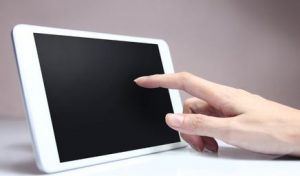Not too long ago, most pre-millennials would not have fathomed there could be a day where they would carry around the world around in their pocket and use a touch screen to hear and experience so many incredible people, places and things. Many people grew up with computer screens that were simply filled with green-colored text on brown/black screens, and you had to have a mouse and keyboard to interact with said screen. Meanwhile, many games required you to use a “a joystick” (younger folks may have to do a “Google Image” search) with a button to enjoy games like Pac-Man.
 However, if you went to Disney World’s Epcot in the late 80s or early 90s, they displayed the “latest technology” for people to enjoy, which included a touchscreen visitors could use. It was quite the site to see for many people, as they were able to choose options and pictures based on what their fingers chose. Oh, the power one felt! A finger was like a magic wand.
However, if you went to Disney World’s Epcot in the late 80s or early 90s, they displayed the “latest technology” for people to enjoy, which included a touchscreen visitors could use. It was quite the site to see for many people, as they were able to choose options and pictures based on what their fingers chose. Oh, the power one felt! A finger was like a magic wand.
Today touchscreens are more sophisticated than ever and they’ve become ubiquitous. Interestingly, the technology that made them possible started to take shape in the 1960s. It was 1965 when E. A. Johnson invented the first finger-driven touchscreen. Then, in 1971, “PLATO IV” became the first touchscreen used in a classroom. These primitive developments were built upon such that the 1980s–the age of computers becoming mainstream– became the time when real strides were made in touchscreen technology. For instance, did you know HP released its HP-150 in 1983, and it was one of the first touchscreen computers? Ten years later, in 1993, the first touchscreen phone debuted.
Northpoint Technologies produces touch screens for today’s needs. From assembly lines to operating rooms, Northpoint Technologies’ touch screens are found worldwide, providing people with crisp, consistent displays. For more information, please call 915-591-6300.






